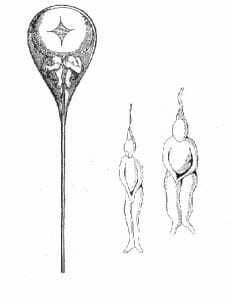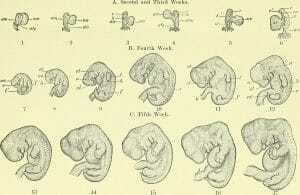Definition of embryo science
Embryology is a branch of the science of life that deals with the evolution of new organisms. Fetal scientists follow the development of sexual cells after the process of the vaccine, the problem of so-called fertilized egg monoclonal and embryo, up to a new organism full of structure and function. There are many disciplines that include fetal science. Some scientists are interested in studying the human embryo, while others study plant and animal embryos.
Evolutionary evolutionary ecologists use embryo as a means of comparing species. A particular organic growth mechanism gives us an idea of its evolutionary history. Other scientists are still using the embryo to better understand the organism they are dealing with, and to preserve threatened species and propagate them. Scientists help the human embryo in women's reproductive health, and understand many issues that may be related to the developmental defects of the fetus and morphological abnormalities.
History of embryo science
The early scientists and philosophers were not ignorant. They were aware of the presence of sperm in conjunction with the invention of the microscope. There have been many theories competing in early fetal science. The first ideas about fetal science are as old as classical philosophers. Aristotle was the first to propose the correct developmental mechanism for the fetus, even without relying on the microscope to support his theory.
It was also suggested that animals are formed by the epigenesis mechanism, a process in which a single cell is subdivided into different tissue types and organs. This theory was just a guess without any evidence of its validity.
A second theory, the preformation theory, gained more attention before the invention of microscopes and modern imaging techniques. This theory assumes that the embryo was small and contained within the semen but was fully formed. According to this theory, women are just receptacles for carrying the growing child.
This theory also suggests that girls come from the left testicle and the boys come from the right testicle! And of course with the knowledge of modern biology, it turned out that this theory is incorrect, but the lack of evidence and the religious resonance of science at that time encouraged this idea is very sexual and unproven.
With the invention of the microscope finally, the first thing people learned about was sperm. Sperm has grown to the extremes and has been shown to contain no fully developed organisms. However, proponents of preconfiguration have not been convinced that sequencing is the answer. The situation remained so until 1827, when clear evidence emerged that female mammals also produced sexual cells called oocytes.
The discovery of female sex cells contradicts many preconceived hypothesis hypotheses, leading to a broader acceptance of the theory of sequential creation. Carl Ernst Von Baer, an egg explorer, and Heinz Christian Pander, proposed the theory that remains the core of fetal science to this day.
This theory is the theory of the sex cell layer, which assumes that one cell becomes several layers of cells during the first divisions of the membership, and then these layers give the rest of the membership through growth and convergence to form organs and vessels and other complex tissues containing differentiated cells.
DNA detection and understanding have led us to a deeper understanding of how sperm and egg are united to form fertilized eggs. The development of ultrasound has allowed us to better study the development of the human embryo. Many studies have been conducted on simple objects to understand the basics of embryo science. Flatworms have been used extensively in study farms because they reproduce sexually and have large eggs and can be studied with a good microscope.
Fruit flies have also been studied for the same reasons. Through his study of the Polychaete worm, Wilson EB Wilsoon develops an encrypted process to understand cell movements and splits during embryonic induction. While the exact process varies according to different species, this method has accelerated understanding of fetal science and led to the development of science and medical knowledge.
Professions in embryology
The fetal world is a world that studies fetal development. Any organism that breeds sexually must somehow produce some sort of embryo evolving into an adult organism. The fetal world studies the evolution of animals and plants and even breakfast, while evolutionists study the fetus as a means of understanding the lines of evolution. For example, all vertebrates, including humans, fall within the embryonic stage in which ancestral gills are found, which develop in humans into parts and pharyngeal structures.
The similarity between embryonic vertebrates is assumed to have originated from one common ancestor using this pattern of sequential genesis. A professional fetus scientist may spend his or her entire time in the laboratory to develop this science or may opt to join the medical field.
Fetal scientists are necessary in all steps of pregnancy control, which is simply embryonic creation. Some fetal scientists specialize in the problems of embryonic genetics that cause abnormalities and disorders. This is called teratology and deals with all disorders from abortion to birth defects. Doctors may specialize only in fetal science and mesothelioma, or they can remain familiar with a wider segment of gynecology.
Many disciplines employ knowledge of embryo science in their work. Many drug manufacturers develop special fertility and infertility drugs, relying on embryonic developments that are key to these efforts. The development of insecticides also depends on embryonic knowledge, as the goal is to stop the reproductive cycle of these organisms. This method is the most cost effective to address the insect problem.
Some scientists use embryo science to improve species; they seek to increase the proliferation of endangered species. For example, scientists from various institutions throughout the United States are seeking to preserve a black-footed ferret, so they need to understand their embryo to succeed, and of course understand their behavior, diet, and mating habits. This is a small example of the importance of the role played by embryo science in the great scientific endeavors.











0 Comments